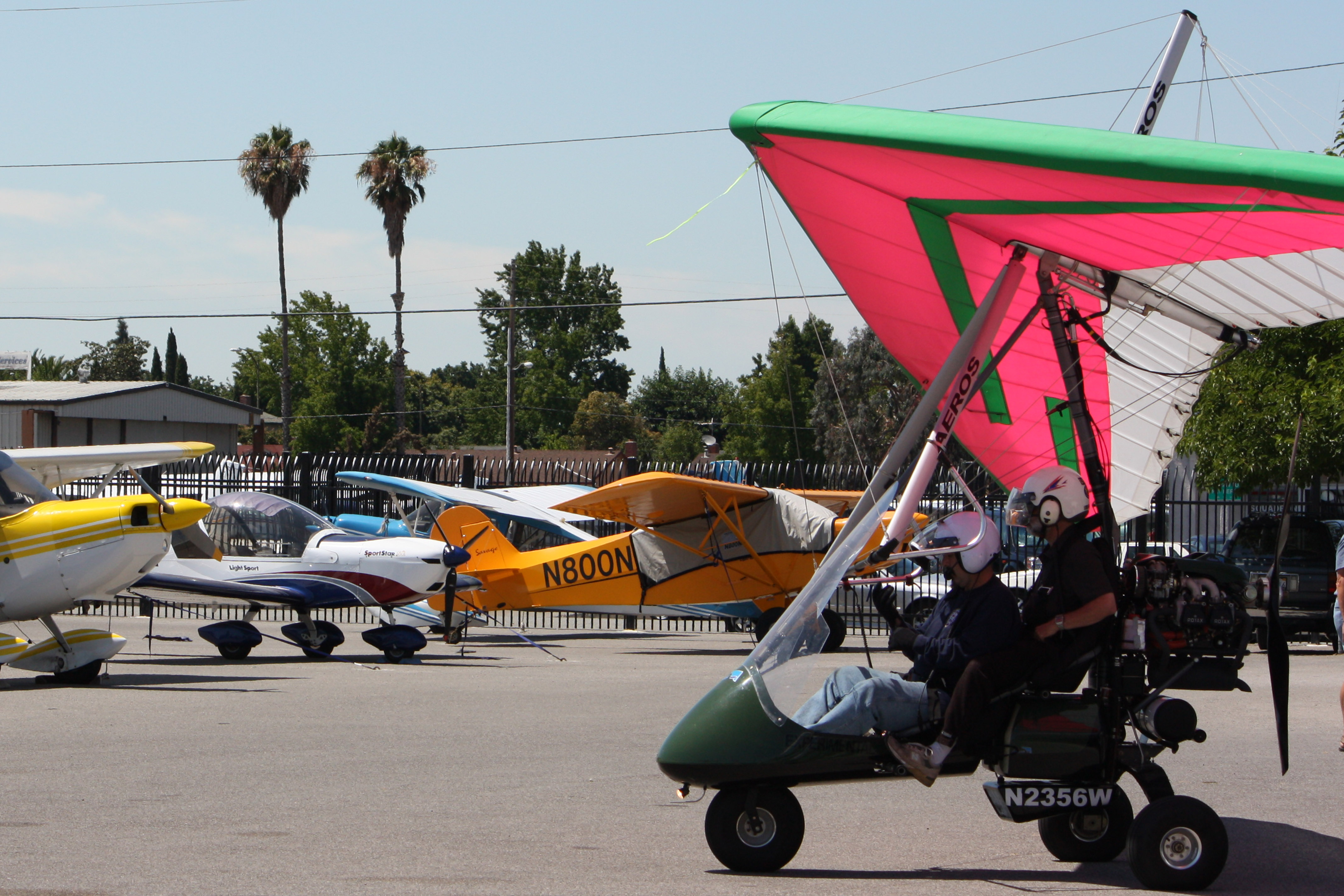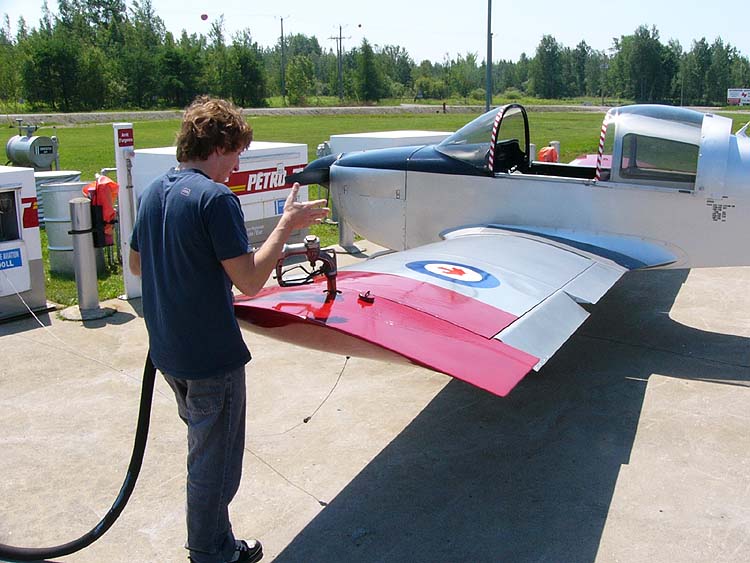|
Evektor EV-97 (2617)
The SportStar and EuroStar are a family of a two-seat, light sport aircraft (LSA), manufactured by Evektor-Aerotechnik of Czechia and powered by a Rotax 912ULS engine.Bayerl, Robby; Martin Berkemeier; et al: ''World Directory of Leisure Aviation 2011-12'', pages 47-48. WDLA UK, Lancaster UK, 2011. ISSN 1368-485X The SportStar was the first special light-sport aircraft (S-LSA) approved by the US Federal Aviation Administration (FAA), and was named "S-LSA Aircraft of the Year" in 2011 by AeroNews Network. According to Flight International, the SportStar held the number-one seller spot in 2005, which the periodical attributed to its high range of options and overall affordability. The Eurostar was the tenth-best-selling ultralight aircraft in Germany in 2014 according to Aerokurier. Development The SportStar and EuroStar were developed together; while the former was specifically developed to meet the needs of the light-sports aircraft (LSA) sector of the general aviation ma ... [...More Info...] [...Related Items...] OR: [Wikipedia] [Google] [Baidu] |
Light Sport Aircraft
A light-sport aircraft (LSA), or light sport aircraft, is a category of small, lightweight aircraft that are simple to fly. LSAs tend to be heavier and more sophisticated than ultralight (aka "microlight") aircraft, but LSA restrictions on weight and performance separates the category from established GA aircraft. There is no standard worldwide description of an LSA. LSAs in different countries The civil aviation authorities in different countries have their own particular specifications and regulations which define the LSA category. For example, in Australia the Civil Aviation Safety Authority defines a light-sport aircraft as a heavier-than-air or lighter-than-air craft, other than a helicopter, with a maximum gross takeoff weight of not more than for lighter-than-air craft; for heavier-than-air craft not intended for operation on water; or for aircraft intended for operation on water. It must have a maximum stall speed of in landing configuration; a maximum of two seat ... [...More Info...] [...Related Items...] OR: [Wikipedia] [Google] [Baidu] |
JAR-VLA
The Joint Aviation Requirements (JAR) were a set of common comprehensive and detailed aviation requirement issued by the Joint Aviation Authorities, intended to minimise Type Certification problems on joint ventures, and also to facilitate the export and import of aviation products.https://www.faa.gov/regulations_policies/rulemaking/committees/documents/media/GACOj23T4-11301992.pdf They were recognised by the civil aviation authorities of participating countries as an acceptable basis for showing compliance with their national airworthiness codes. The European Aviation Safety Agency (EASA) was created in 2003 and reached full functionality in 2008, and has since taken over most of the JAA functions. JAA Certification Specifications, formerly known as JARs, are recognised by EASA as an acceptable basis for showing compliance with their national airworthiness codes. See also *Federal Aviation Regulations The Federal Aviation Regulations (FARs) are rules prescribed by the Fed ... [...More Info...] [...Related Items...] OR: [Wikipedia] [Google] [Baidu] |
Gasoline
Gasoline ( North American English) or petrol ( Commonwealth English) is a petrochemical product characterized as a transparent, yellowish, and flammable liquid normally used as a fuel for spark-ignited internal combustion engines. When formulated as a fuel for engines, gasoline is chemically composed of organic compounds derived from the fractional distillation of petroleum and later chemically enhanced with gasoline additives. It is a high-volume profitable product produced in crude oil refineries. The ability of a particular gasoline blend to resist premature ignition (which causes knocking and reduces efficiency in reciprocating engines) is measured by its octane rating. Tetraethyl lead was once widely used to increase the octane rating but is not used in modern automotive gasoline due to the health hazard. Aviation, off-road motor vehicles, and racing car engines still use leaded gasolines. Other substances are frequently added to gasoline to improve chemical st ... [...More Info...] [...Related Items...] OR: [Wikipedia] [Google] [Baidu] |
Avgas
Avgas (aviation gasoline, also known as aviation spirit in the United Kingdom, UK) is an aviation fuel used in aircraft with spark-ignited internal combustion engines. ''Avgas'' is distinguished from conventional gasoline (petrol) used in motor vehicles, which is termed ''mogas'' (motor gasoline) in an aviation context. Unlike motor gasoline, which has been formulated without lead since the 1970s to allow the use of catalytic converters for pollution reduction, the most commonly used grades of avgas still contain tetraethyllead, tetraethyl lead, a toxic lead-containing additive used to aid in lubrication of the engine, increase octane rating, and prevent engine knocking (spark-knock). There are ongoing efforts to reduce or eliminate the use of lead in aviation gasoline. Kerosene-based jet fuel is formulated to suit the requirements of gas turbine, turbine engines which have no octane requirement and operate over a much wider flight envelope than piston engines. Kerosene is also ... [...More Info...] [...Related Items...] OR: [Wikipedia] [Google] [Baidu] |
Unleaded Petrol
Gasoline (North American English) or petrol (Commonwealth English) is a petrochemical product characterized as a transparent, yellowish, and flammable liquid normally used as a fuel for spark-ignited internal combustion engines. When formulated as a fuel for engines, gasoline is chemically composed of organic compounds derived from the fractional distillation of petroleum and later chemically enhanced with gasoline additives. It is a high-volume profitable product produced in crude oil refineries. The ability of a particular gasoline blend to resist premature ignition (which causes knocking and reduces efficiency in reciprocating engines) is measured by its octane rating. Tetraethyl lead was once widely used to increase the octane rating but is not used in modern automotive gasoline due to the health hazard. Aviation, off-road motor vehicles, and racing car engines still use leaded gasolines. Other substances are frequently added to gasoline to improve chemical stability a ... [...More Info...] [...Related Items...] OR: [Wikipedia] [Google] [Baidu] |
Piston Engine
A reciprocating engine, more often known as a piston engine, is a heat engine that uses one or more Reciprocating motion, reciprocating pistons to convert high temperature and high pressure into a Circular motion, rotating motion. This article describes the common features of all types. The main types are: the internal combustion engine, used extensively in motor vehicles; the steam engine, the mainstay of the Industrial Revolution; and the Stirling engine for niche applications. Internal combustion engines are further classified in two ways: either a spark-ignition engine, spark-ignition (SI) engine, where the spark plug initiates the combustion; or a compression-ignition engine, compression-ignition (CI) engine, where the air within the cylinder is compressed, Adiabatic process, thus heating it, so that the heated air ignites fuel that is injected diesel engine, then or hot-bulb engine, earlier.''Thermodynamics: An Engineering Approach'' by Yunus A. Cengal and Michael A. Boles ... [...More Info...] [...Related Items...] OR: [Wikipedia] [Google] [Baidu] |
Rotax 912ULS
The Rotax 912 is a horizontally-opposed four-cylinder, naturally-aspirated, four-stroke aircraft engine with a reduction gearbox. It features liquid-cooled cylinder heads and air-cooled cylinders. Originally equipped with carburetors, later versions are fuel injected. Dominating the market for small aircraft and kitplanes, Rotax produced its 50,000th 912-series engine in 2014. Originally available only for light sport aircraft, ultralight aircraft, autogyros and drones, the 912-series engine was approved for certified aircraft in 1995. Design and development The Rotax 912 was first sold in 1989 in non- certificated form for use in ultralights and motorgliders. The original 912 UL engine has a capacity of and a compression ratio of 9.1:1, and is designed to work with regular automotive gasoline, with up to 10% ethanol. The later certified 912 ULS variant has a compression ratio of 11:1, and requires 91-octane ("premium") auto gas (100LL leaded avgas can be us ... [...More Info...] [...Related Items...] OR: [Wikipedia] [Google] [Baidu] |
Ballistic Parachute
A ballistic parachute, ballistic reserve parachute, or emergency ballistic reserve parachute, is a parachute ejected from its casing by a small explosion, much like that used in an ejection seat. The advantage of the ballistic parachute over a conventional parachute is that it ejects the parachute canopy (oftentimes via a small rocket), causing it to open rapidly, thus making it ideal for attaching to light aircraft, hang gliders and microlights, where an emergency may occur in close proximity to the ground. In such a situation, a conventional parachute would not open quickly enough. In 1982, Comco Ikarus developed the FRS rocket-launched parachute system for its ultralight and hanglider aircraft. In 1999, Cirrus Aircraft (then known as Cirrus Design) provided the first ballistic parachutes as standard equipment on their line of type-certified aircraft, the Cirrus SR20; and in 2016, the company delivered the Cirrus Vision SF50, the first jet aircraft with a ballistic parachute. ... [...More Info...] [...Related Items...] OR: [Wikipedia] [Google] [Baidu] |
Floatplane
A floatplane is a type of seaplane with one or more slender floats mounted under the fuselage to provide buoyancy. By contrast, a flying boat uses its fuselage for buoyancy. Either type of seaplane may also have landing gear suitable for land, making the vehicle an amphibious aircraft. British usage is to call floatplanes "seaplanes" rather than use the term "seaplane" to refer to both floatplanes and flying boats. Use Since World War II and the advent of helicopters, advanced aircraft carriers and land-based aircraft, military seaplanes have stopped being used. This, coupled with the increased availability of civilian airstrips, has greatly reduced the number of flying boats being built. However, many modern civilian aircraft have floatplane variants, most offered as third-party modifications under a supplemental type certificate (STC), although there are several aircraft manufacturers that build floatplanes from scratch. These floatplanes have found their niche as one type ... [...More Info...] [...Related Items...] OR: [Wikipedia] [Google] [Baidu] |
Amphibian
Amphibians are ectothermic, anamniote, anamniotic, tetrapod, four-limbed vertebrate animals that constitute the class (biology), class Amphibia. In its broadest sense, it is a paraphyletic group encompassing all Tetrapod, tetrapods, but excluding the amniotes (tetrapods with an amniotic membrane, such as modern reptiles, birds and mammals). All extant taxon, extant (living) amphibians belong to the monophyletic subclass (biology), subclass Lissamphibia, with three living order (biology), orders: Anura (frogs and toads), Urodela (salamanders), and Gymnophiona (caecilians). Evolved to be mostly semiaquatic, amphibians have adapted to inhabit a wide variety of habitats, with most species living in freshwater ecosystem, freshwater, wetland or terrestrial ecosystems (such as riparian woodland, fossorial and even arboreal habitats). Their biological life cycle, life cycle typically starts out as aquatic animal, aquatic larvae with gills known as tadpoles, but some species have devel ... [...More Info...] [...Related Items...] OR: [Wikipedia] [Google] [Baidu] |
Glider (sailplane)
A glider or sailplane is a type of glider aircraft used in the leisure activity and sport of gliding (also called soaring). This unpowered aircraft can use naturally occurring currents of rising air in the atmosphere to gain altitude. Sailplanes are aerodynamically streamlined and so can fly a significant distance forward for a small decrease in altitude. In North America the term 'sailplane' is also used to describe this type of aircraft. In other parts of the English-speaking world, the word 'glider' is more common. Types Gliders benefit from producing very low drag for any given amount of lift, and this is best achieved with long, thin wings, a slender fuselage and smooth surfaces with an absence of protuberances. Aircraft with these features are able to soar – climb efficiently in rising air produced by thermals or hills. In still air, sailplanes can glide long distances at high speed with a minimum loss of height in between. Sailplanes have rigid wings and either ... [...More Info...] [...Related Items...] OR: [Wikipedia] [Google] [Baidu] |








